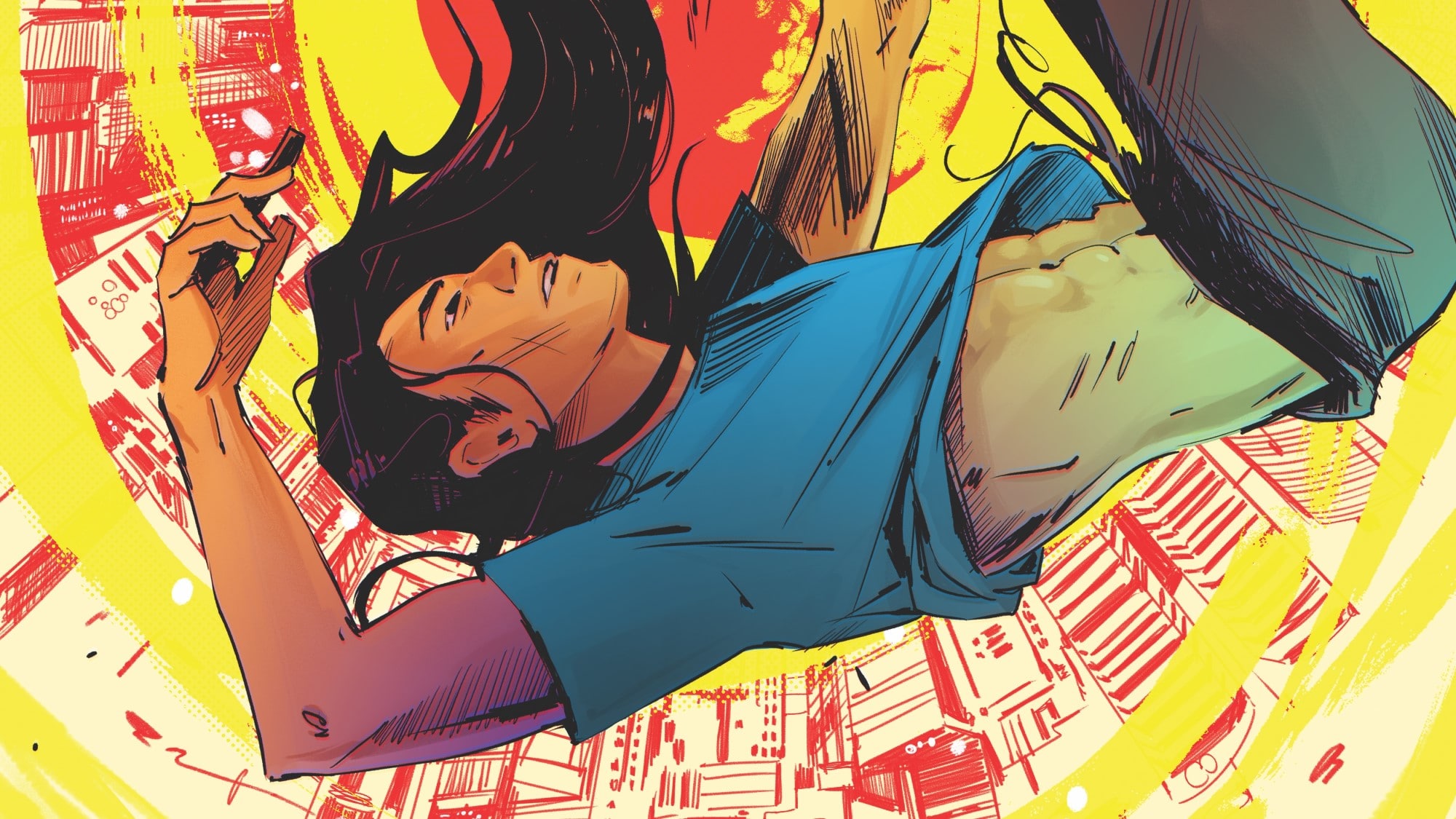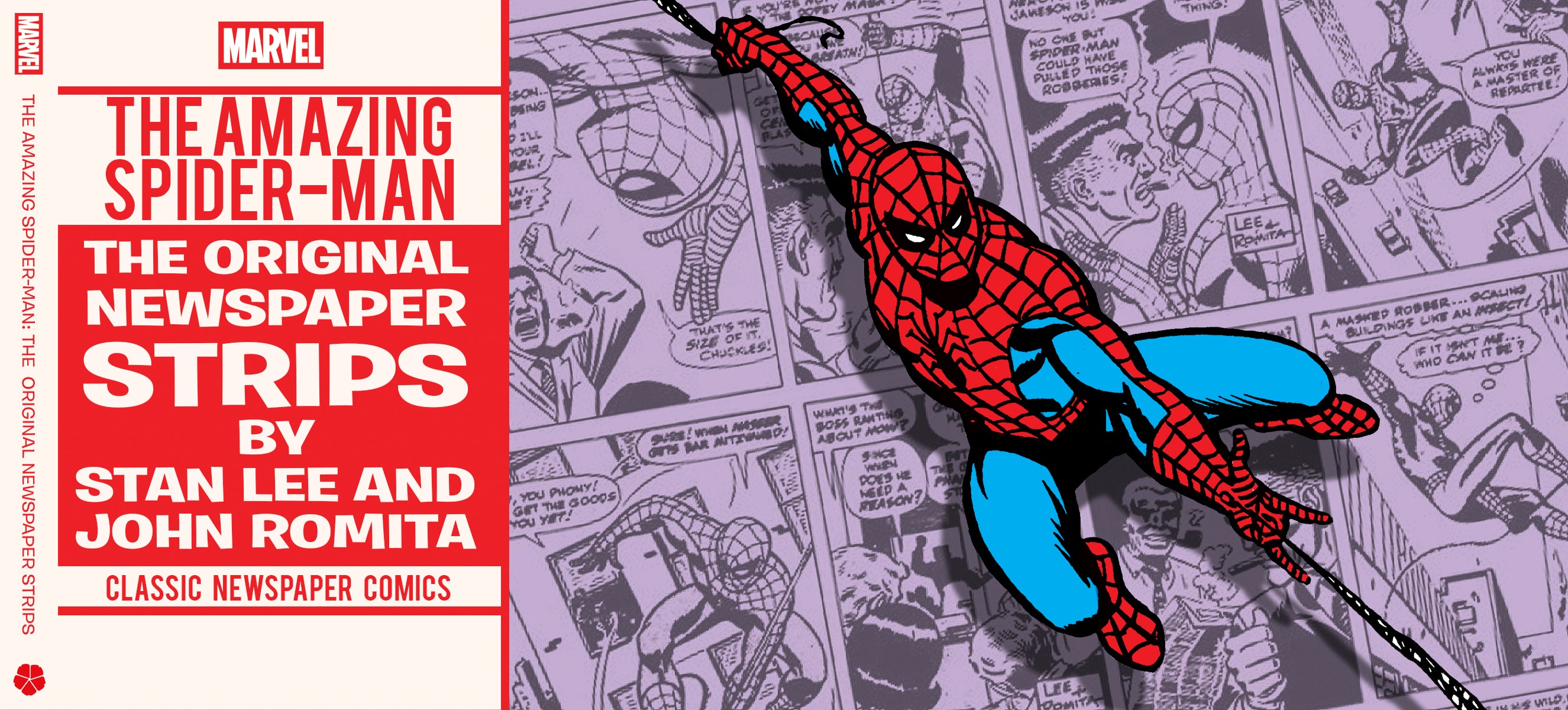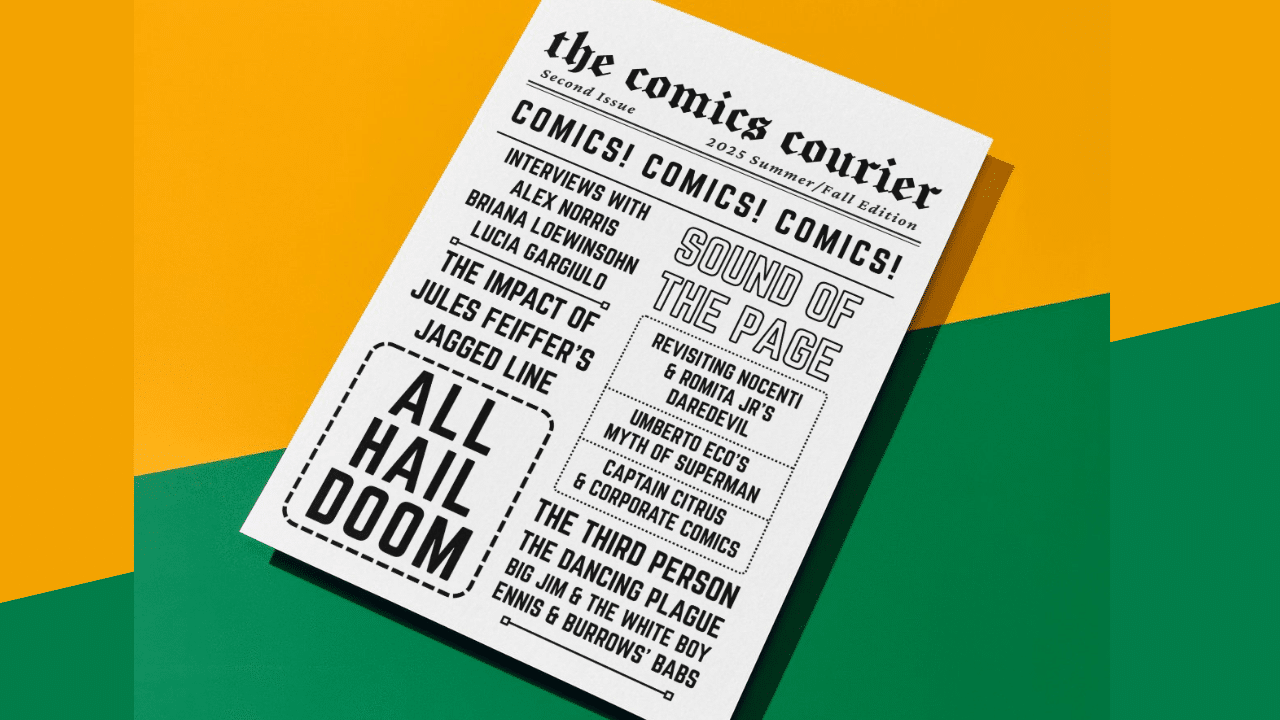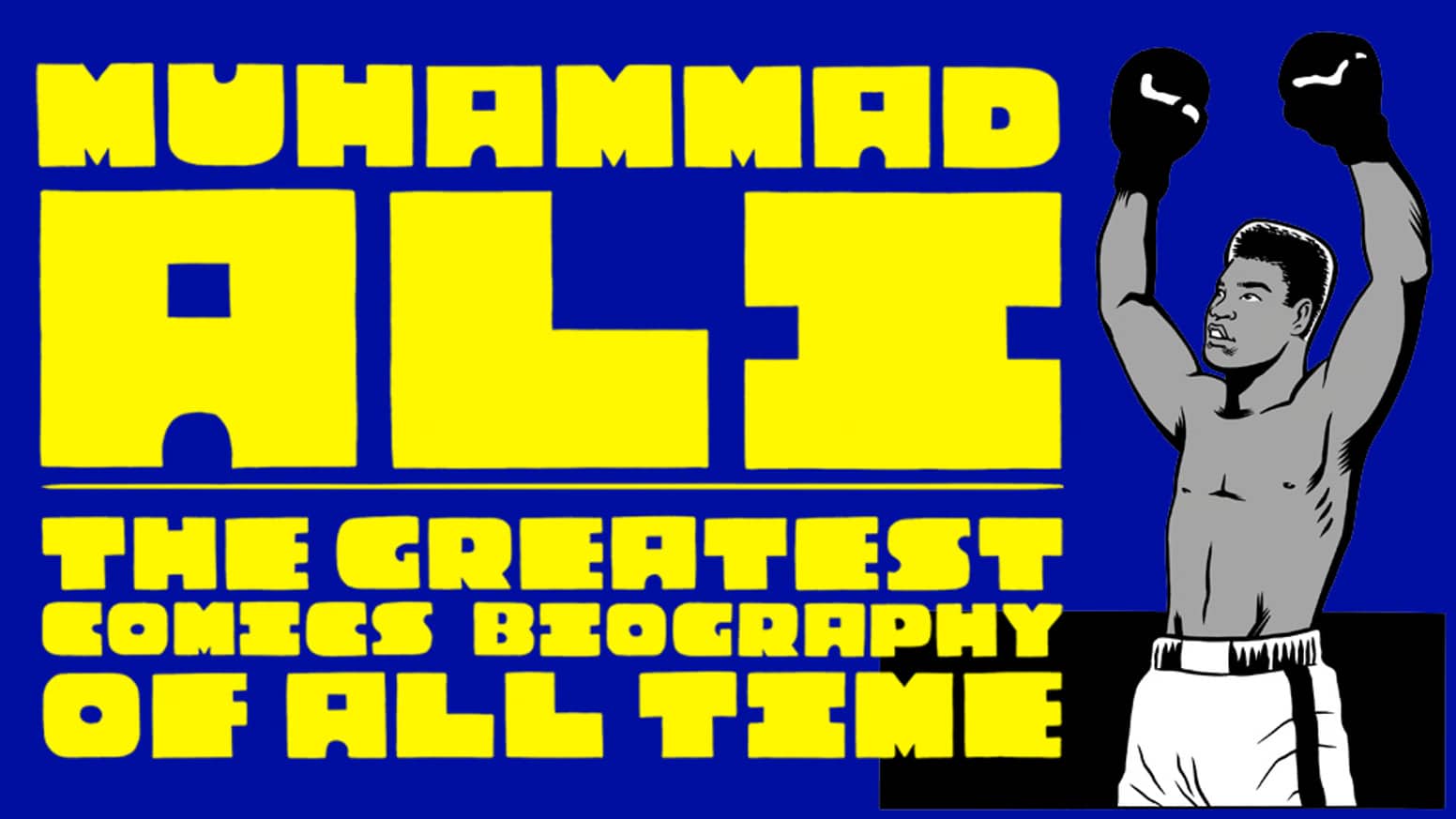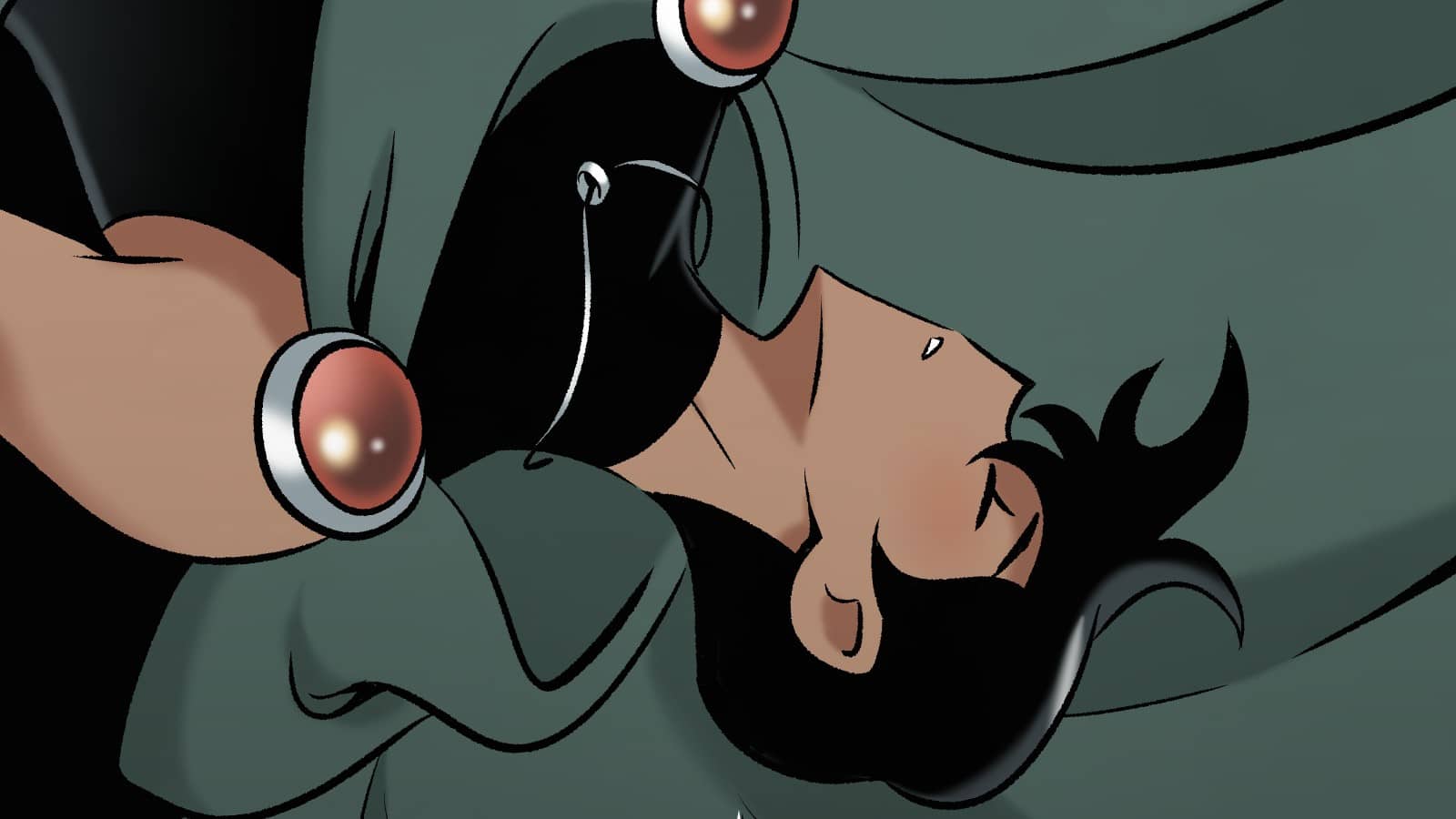Reburn is a futuristic dystopian comic about revolution and what happens when revolution goes awry. This interview with writer Alyson Shelton, artist Elise McCall and series editor Jessica Petelle delves into the visual world of Reburn, the complications of long-distance collaboration and the many perils of Kickstarting an ongoing series.
Tiffany Babb: Can you give me a quick overview of the world of Reburn?

Alyson Shelton: In the future, catastrophic floods hit our planet which leave behind massive destruction and a woman they name May. Super-powered and ready to fight, she joins forces with a woman who calls herself Hope. Hope longs to create a place where differences no longer exist, where all people band together to become one, The Unity.
Our story picks up years later. After fighting to help establish The Unity, people aren’t certain if May is dead or alive. Hope is well-established as the “servant and leader.” What was once a glorious ideal now controls all in the pursuit of power.
Tiffany: Why is the story of Reburn important to you?
Alyson: I love this story and even more so after collaborating on it for two years with the whole team. Years ago, I wrote a screenplay featuring the character, Violet, one of May’s daughters and I imagined she would meet her mom … someday. And then the script sat idle while I wrote other things, had children, stepped away from writing and returned. I revisited the script and realized I was fascinated by May, and I wanted to tell her story and from the perspective of rebuilding after losing everything. I wasn’t as interested in watching her live through all of this intense trauma. I wanted to get to the next part. How to rebuild? How to use the life lessons to do it better this time? How, even if you’re the most powerful person in the world, shit is complicated.

Elise McCall: I love a good action heroine, especially one with flashy fire powers, but I also resonated with May’s story on a deeper emotional level. In her, I see a lot of my own mother’s struggles with mental illness and trauma. I admire in these women the strength it takes to pursue truth, no matter how hard it may be to face, or tempting it may be to escape. How does our protagonist May even begin to make sense of her life in the shadow of great pain and trauma? Since the start, I loved that Reburn endeavors to explore these complex emotional themes, with the veneer of some of my favorite comic book genres in sci-fi, action and superheroes. I think any therapy journey would be a lot more interesting with fire powers!

Jessica Petelle: There are so many layers to this question! I have always been drawn to projects with a strong female lead, and you can’t get stronger than May as created by Alyson. When we started working on the initial pitch, we intended to take it out to traditional publishers, but COVID hit, and instead of putting it on a shelf we decided to take our power back and move forward into the unknown. So that parallel of May’s journey with ours is something that I have embraced and will always be grateful for.
Tiffany: Alyson and Jessica, you’ve known each other for quite a long time. Can you tell me how you met and how you started developing this project?
Jessica: We met as assistants at a production company many years ago, now. Alyson shared a script with me that I think at the time was titled VIOLET. I remember her writing being so well drawn that I felt like I was in the world. I went off to start producing, but we stayed in touch over the years, so it was wonderful when she came to me a few years ago with a script entitled THE UNITY. I had just come off of working on a series that was based on a graphic novel, so it was fresh in my mind to turn the script into a comic. Unbeknownst to me, Alyson and her husband, Cody, are big comic fans, so the idea went over very well … and we just kinda started asking people we knew working in the space … and then we just started stumbling our way through it.
Alyson: Yes! The screenplay was titled VIOLET, and my husband and I are big comic fans. In fact, when I first wrote THE UNITY, Cody said, “Wouldn’t this make an awesome comic book?” And I said, “Sure. Annnnd I have no idea how to even do that.” So when Jessica mentioned the possibility of making it into a comic book, I was thrilled. It was like she was reading my mind and giving me ideas on how to proceed and offering to team up and do this thing neither of us had ever done — together. I couldn’t have done it without her, and honestly I wouldn’t want to; her experience, knowledge and creative contributions make me and the book better.
Tiffany: Can you share a little about your collaboration process?
Jessica: My role is to support Alyson, Elise and all of the artists in any way that I can during the process. Our all-female team is scattered across the globe, and most of us have never met, so it’s a lot of coordination to keep us moving forward. There are times when we’re all hands on deck discussing creative and giving notes, and then other times where we’re doing the not so fun business side — because, of course in the process, we realized that we’re publishers now, too!
Alyson: We hit the jackpot when we found Elise. I was already a fan because of her work on the Image comic Man-Eaters, and from the first call, it felt so easy to talk and find our way forward. We start with the script and we talk a lot, about the world, about our lives and the characters and how these things intertwine to make an issue of Reburn. We had the gift of time during lockdown to sit on Zoom calls and discuss books, social justice, politics, family, honestly everything, and now we have a shorthand. And I believe all of it shows up in the comic because I trust Elise and love her ideas and deeply admire her talent. It’s a true collaboration. And I can’t wait to see what she comes up with, every single time. It’s a joy. When I saw her first set of pencils, which she hand drew, I cried tears of recognition. It was powerful to see my ideas so beautifully rendered, it was all better than I could have ever imagined.
Elise: It has just been such a pleasure working with this incredibly inspiring team! Most comics are made using some form of a pipeline process, almost like a scaled down film production, so you really don’t know how it all comes together until the very end. It takes a lot of trust, both in the process and in your collaborators. Alyson and Jessica offered that trust tenfold. This project landed in my lap at a moment when I needed it most, during the early days of the pandemic. Our working relationship was shaped by many creative Zoom calls, as a space for authentic discussions about all sorts of wide-ranging topics, which all led back to Reburn in one way or another. Alyson’s writings were so prescient of our times. Reburn was this project where we could really tackle some larger issues in what felt like a meaningful and productive way. When you’ve got a solid narrative foundation like that, everything else just flows easily.

Tiffany: Can you tell me a little bit about how you created the visual world of Reburn? Did you have any specific worlds/texts you were drawing from?
Elise: That’s a really good question, and I’d say that there’s two parts to it. In order to define what the world of Reburn would look like, I had to understand the context of The Unity. They are such a huge force in the narrative and drive the characters towards their goals for better or worse. In some of my early discussions with Alyson we talked about classic dystopias. The Unity is also this high-tech civilization with cult-like dogma surrounding their technology. I took additional inspiration from the cyberpunk genre and combined that with a sort of retro-futurist idealism.
On the other hand is everything else, which exists in stark contrast to The Unity’s doctrine. This dichotomy is really important because The Unity defines itself as separate from the world and offers some sort of an escape. So what were people escaping? Put simply: nature. A series of catastrophic natural disasters drove people to seek refuge in The Unity. So whenever possible I like to create a juxtaposition between the highly fabricated and idealized world of The Unity against the sublime yet serene landscapes of nature. I’m a big gamer, so I especially loved The Last of Us (2013) and its depiction of an overgrown post-apocalyptic world, devoid of most people. Despite its somber context, there’s a beauty in that nature. That’s the balance I wanted to strike in Reburn to reflect the emotional state of our protagonist May, who herself wields an unruly natural force in the palm of her hand and must reconnect with that force in order to reclaim her life.
Tiffany: Kickstarting a comic issue by issue is no easy feat. How has serializing the book while being dependent on audience funding influenced how you tell your story?
Jessica: Wow, well, we couldn’t do this without our friends, fans and family! Kickstarter has been a roller coaster and afforded us the opportunity to keep telling our story. I have utilized crowdfunding platforms in the past and really liked the community on Kickstarter. And, even though people told us, we really had no idea how much work goes into a successful Kickstarter. Every dime we make that isn’t used for the issue at hand is rolled into the next one, and we’re fortunate that we can be working on issues #3 and #4 before we open the campaign in order to guarantee our community that they won’t have to wait long to wrap up this arc of Reburn.
Alyson: Yes, Kickstarters are hard work and a miracle, too. Without our fans we wouldn’t be doing this, so we’re incredibly grateful. When I write I try to write a book full of things I want to see: rich characters, fights, cool concepts, gorgeous environments, snappy dialogue and twists, and I keep those things in mind when I write. I don’t think the fact that we were on Kickstarter influenced my writing any more than just thinking about having an audience in general affects me. This comic doesn’t exist solely for my entertainment, but if I think it’s awesome (I’ve read enough comics to know what I love), I believe other people will love it, too.
Tiffany: I read on your Kickstarter page that you have a character inspired by an actress — Laura Vandervoort. That felt like a unique detail. How did that come about?
Jessica: Yes! We’re so lucky that Laura Vandervoort has been such a great supporter of Reburn. Laura and I go way back, and it just made so much sense to bring her into the mix. She has some of the most wonderful fans! Elise McCall created a beautiful Supergirl piece of art that also features Laura’s dog Frankie, and Laura inspired the character Poppy in issue #2. As a part of our issue #2 campaign, we worked with Anjali Bhimani, best known as the voice of Symmetra in Overwatch among many other exciting things. Anjali inspired the character of Reverence in issue #3.
Tiffany: Can you tell me what readers can expect in issues #3 and #4 of Reburn?
Alyson: I’m so excited to share issues #3 and #4! Joamette Gil, our amazing letterer, just turned in the letters for issue #3. They look great! And #4 is currently being colored by the incredible Hilary Jenkins, who brings so much to this world. In a truly serendipitous turn, Fiona Staples shared in her IG story about her friend Hilary Jenkins. I looked at some of Hilary’s work, reached out to her and now she’s an essential part of the team. Lucky us!
Issue #3 takes us into Skye’s backstory, his life as Hope’s servant and the world of the Citadel. We meet new characters, like Reverence, inspired by Anjali Bhimani, and Rain, the lead of Prism Labs, and Hawk, all essential players in this story.
I feel like Stefon on SNL. It’s got everything! Romance! Flames! Flashbacks! Double-crosses! Lies! Reveals! Knife throwing! Arrows!
I’m incredibly excited about these issues. The work our team is putting together just gets better and better. It’s thrilling.
Support issues #3 and 4 of Reburn on Kickstarter. For more information, visit reburncomic.com.

